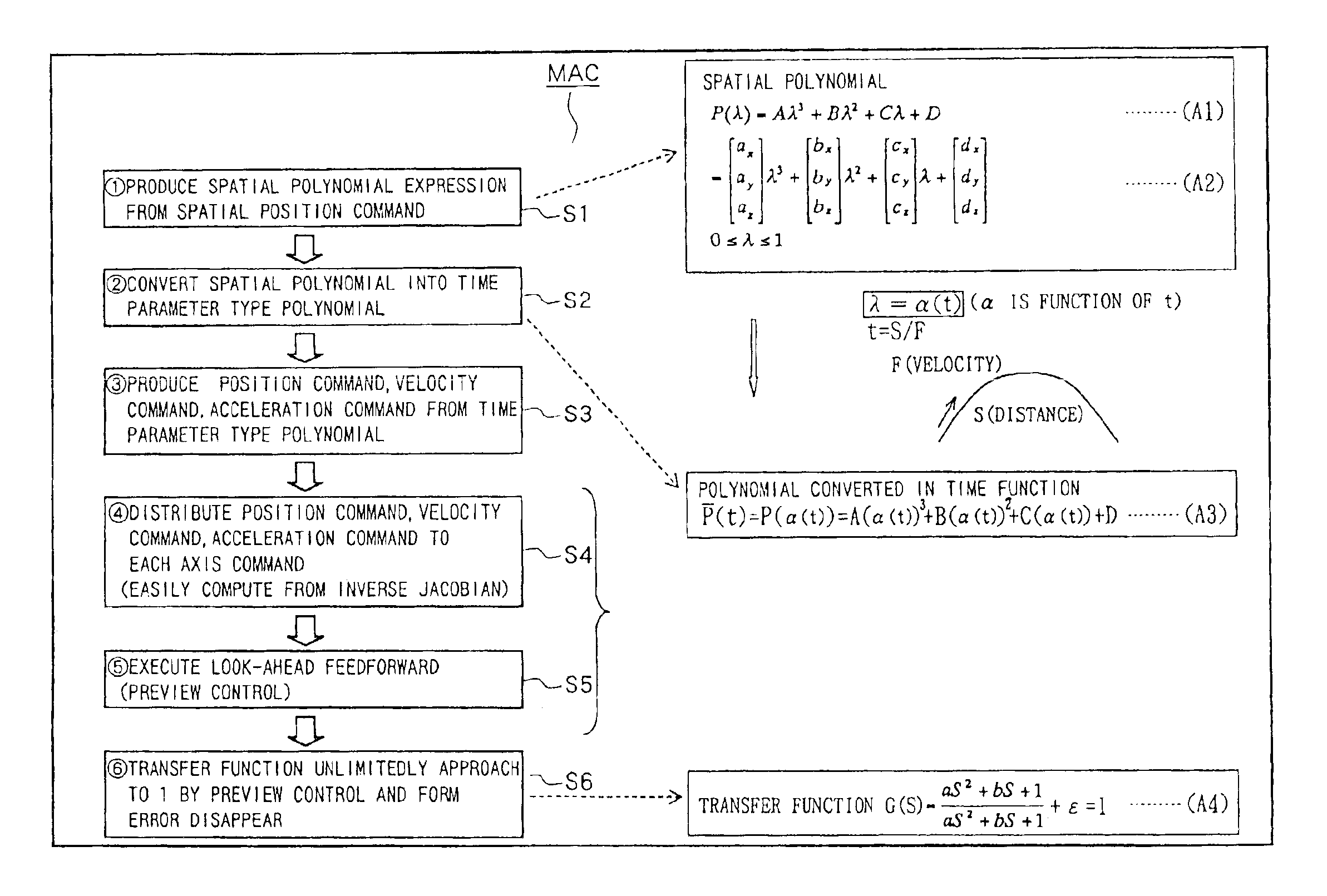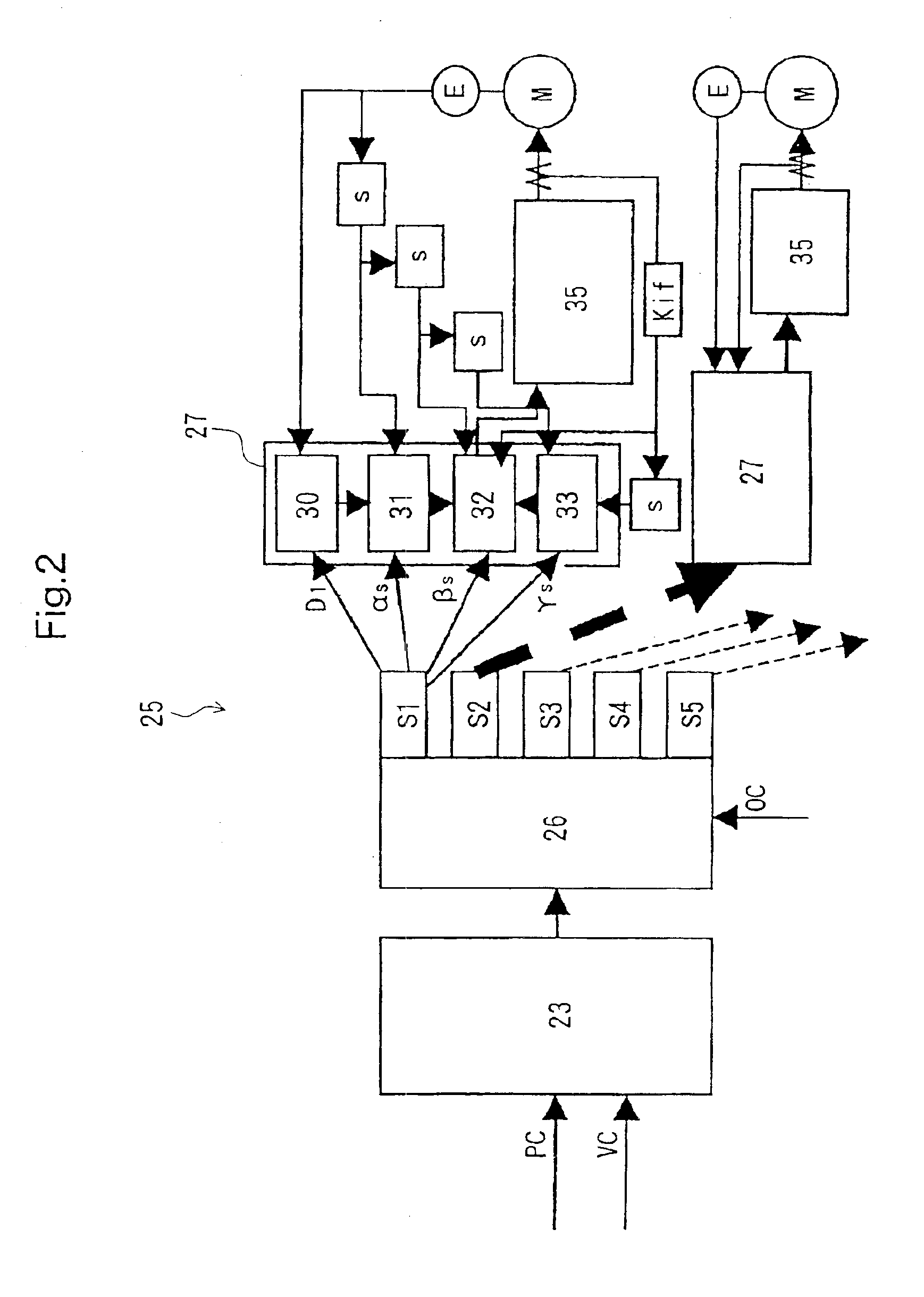Numerically controlled method
a numerical control and method technology, applied in the direction of program control, electric programme control, instruments, etc., can solve the problems of reducing affecting the accuracy of the control method, and introducing an element of delay into the control method, so as to achieve the effect of reducing the irregularity or position shift of the feeding process and high accuracy
- Summary
- Abstract
- Description
- Claims
- Application Information
AI Technical Summary
Benefits of technology
Problems solved by technology
Method used
Image
Examples
Embodiment Construction
[0033]Embodiments of the present invention will now be explained hereinafter, referring to drawings.
[0034]FIG. 3 shows a laser beam machine of the present embodiment. The laser beam machine 1 can have a base 2, with a table 3 provided on the base 2 being free to move and be driven in a horizontal X axis direction, as shown in FIG. 3. On the table 3, a workpiece W can be positioned for machining. A column 5 is provided on the base 2, bridging over the table 3, and having a saddle 6 that is free to move and be driven in a horizontal Y axis direction (the direction orthogonal to the X axis direction).
[0035]The saddle 6 has a head unit 7, which is free to move and be driven along the Z axis. Referring to FIG. 3(b), the head unit 7 is comprised of a first portion 7a on the saddle 6 side, a second portion 7b, being free to rotate and be driven along an axis “A” with respect to the first portion 7a, and having an axial center CT1 of the first portion 7a parallel to the Z-axis. A third port...
PUM
 Login to View More
Login to View More Abstract
Description
Claims
Application Information
 Login to View More
Login to View More - R&D
- Intellectual Property
- Life Sciences
- Materials
- Tech Scout
- Unparalleled Data Quality
- Higher Quality Content
- 60% Fewer Hallucinations
Browse by: Latest US Patents, China's latest patents, Technical Efficacy Thesaurus, Application Domain, Technology Topic, Popular Technical Reports.
© 2025 PatSnap. All rights reserved.Legal|Privacy policy|Modern Slavery Act Transparency Statement|Sitemap|About US| Contact US: help@patsnap.com



